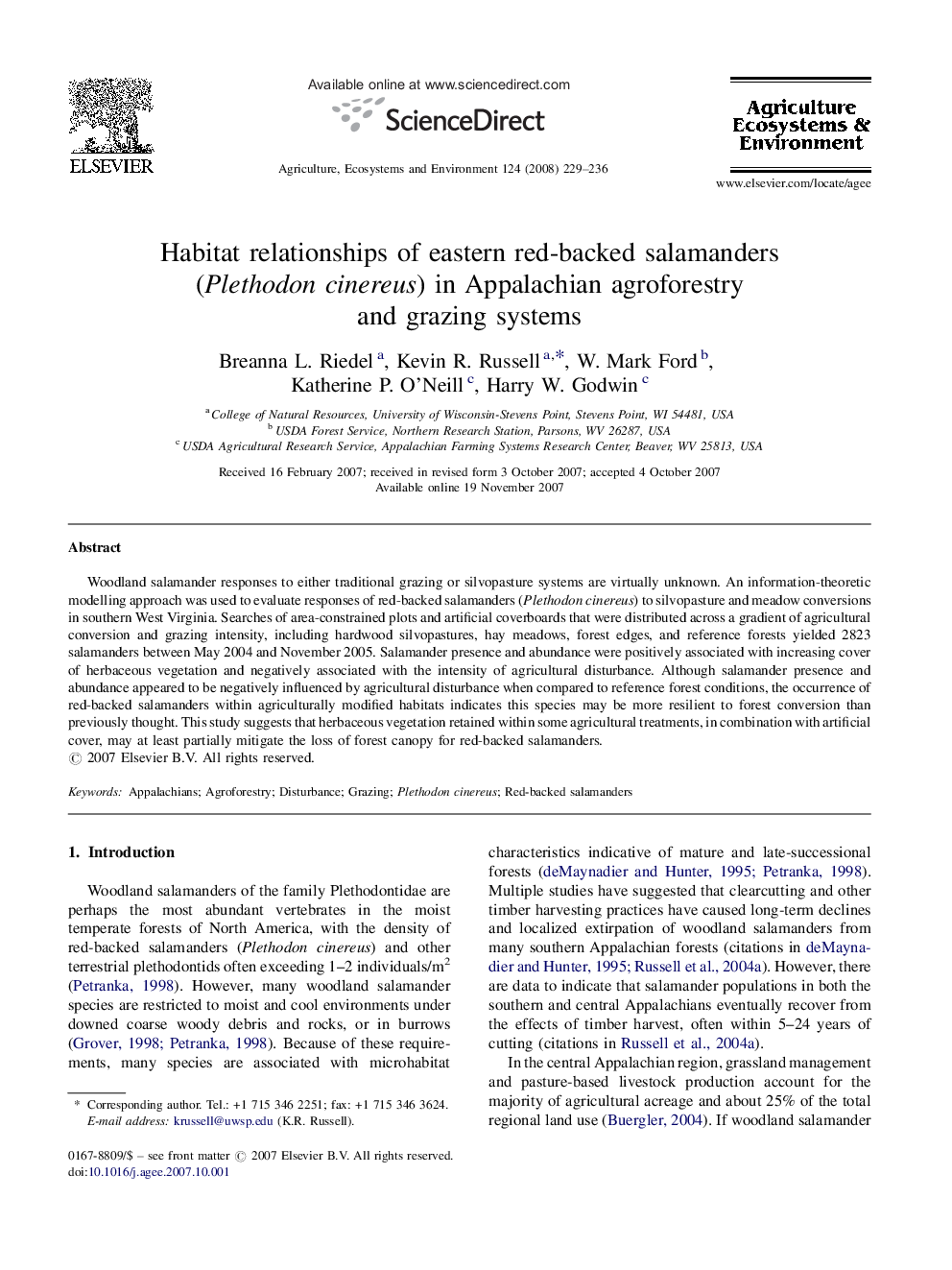| Article ID | Journal | Published Year | Pages | File Type |
|---|---|---|---|---|
| 2415453 | Agriculture, Ecosystems & Environment | 2008 | 8 Pages |
Woodland salamander responses to either traditional grazing or silvopasture systems are virtually unknown. An information-theoretic modelling approach was used to evaluate responses of red-backed salamanders (Plethodon cinereus) to silvopasture and meadow conversions in southern West Virginia. Searches of area-constrained plots and artificial coverboards that were distributed across a gradient of agricultural conversion and grazing intensity, including hardwood silvopastures, hay meadows, forest edges, and reference forests yielded 2823 salamanders between May 2004 and November 2005. Salamander presence and abundance were positively associated with increasing cover of herbaceous vegetation and negatively associated with the intensity of agricultural disturbance. Although salamander presence and abundance appeared to be negatively influenced by agricultural disturbance when compared to reference forest conditions, the occurrence of red-backed salamanders within agriculturally modified habitats indicates this species may be more resilient to forest conversion than previously thought. This study suggests that herbaceous vegetation retained within some agricultural treatments, in combination with artificial cover, may at least partially mitigate the loss of forest canopy for red-backed salamanders.
